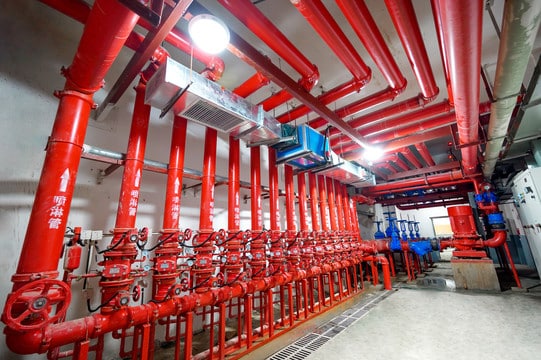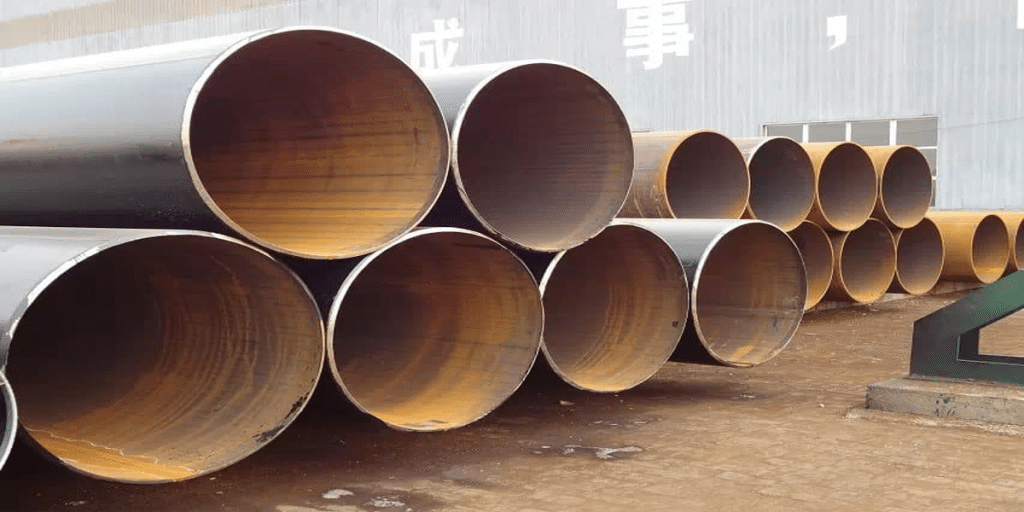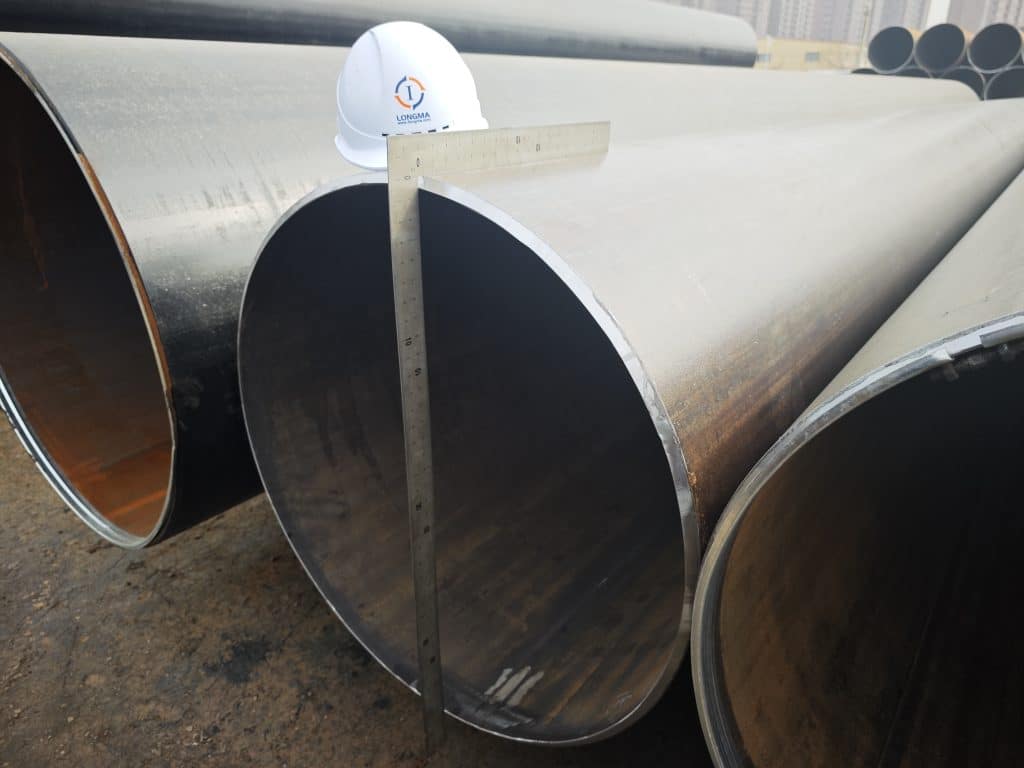For common ASTM A53 carbon steel pipes (seamless/ERW/LSAW), 3LPE/3LPP is the first choice for underground projects or those with high risk of mechanical damage; FBE (single-layer or multi-layer) is used as the primary protective coating for conventional underground or medium-temperature working conditions; hot-dip galvanizing or epoxy primer + topcoat can be considered for exposed pipes or small-diameter pipes. It is still recommended that all underground pipes be combined with Cathodic Protection (CP) to ensure long-term reliability.
Why Is Coating Important?
ASTM A53 pipes are widely used in water transmission, water supply and drainage, oil and gas, and structural pipelines. Carbon steel is highly susceptible to corrosion in humid, acidic/alkaline soil, or salt-containing environments. Proper coatings can significantly extend service life, reduce leakage risks and maintenance costs, while lowering the demand for CP current. Selecting a suitable coating system for different working conditions (underground/underwater/outdoor) is key to reducing the Life Cycle Cost (LCC).
Common Coating Types and Applicable Scenarios
- FBE (Fusion-Bonded Epoxy) – Advantages and Applications
- Features: Excellent adhesion, chemical resistance, and cathodic disbondment resistance; can be used as a base layer or a single-layer coating. It is applied via electrostatic powder spraying and cured by heat.
- Applicable Scenarios: Medium-temperature underground applications, drinking water pipelines, natural gas transmission, and as the primer (base layer) for 3LPE.
- Considerations: Single-layer FBE offers less protection against mechanical impacts (e.g., backfilling, construction scratches) compared to outer PE/PP layers; certified formulations should be selected for high-humidity and high-temperature environments.
- 3LPE / 3LPP (Three-Layer Polyethylene/Polypropylene) – First Choice for Mechanical and Long-Term Corrosion Protection
-
- Features: The structure consists of FBE (base layer) + adhesive + thick PE/PP outer layer, providing both a chemical barrier and excellent mechanical protection.
- Applicable Scenarios: Typical long-distance buried pipelines, offshore pipe landing sections, projects with poor soil conditions, and high risk of mechanical wear during backfilling.
- Thickness Reference: The total thickness of the outer layer typically ranges from 1.8 mm to 4.7 mm (depending on specifications and project requirements).
- Hot-Dip Galvanizing
-
- Features: An economical corrosion protection method for small-diameter pipes or exposed (non-buried) structural pipes; ASTM A53 explicitly specifies requirements for “galvanized pipes” in its relevant chapter.
- Applicable Scenarios: Outdoor applications, mildly corrosive environments, structural pipe fittings, short-term projects, or projects with budget constraints (one of the preferred options).
- Asphalt/Coal Tar Enamel, Epoxy High-Solid Coatings, etc. (Traditional/Special Scenarios)
-
- Features: Low cost and still applicable for some old projects; however, their durability, environmental friendliness, and construction standards are gradually being replaced by modern polymer systems.
How to Select Based on Project Site and Working Conditions
Key decision criteria:
- Soil type and resistivity: Highly corrosive/low-resistivity environments require more robust coatings + CP.
- Burial status, burial depth, and potential mechanical damage: If mechanical damage is a risk, prioritize 3LPE/3LPP.
- Operating temperature: For high-temperature conditions, select temperature-resistant formulations or more heat-stable systems such as 3LPP.
- Joint/field weld handling: Field joint coatings/heat-shrink sleeves/special repair materials must be used; relevant volumes of ISO 21809 provide specific guidelines.
- Service life and LCC considerations: 3LPE requires higher initial investment but is more economical in the long run, as maintenance and leakage costs are significantly reduced.
Quick Comparison Table
| Coating Type | Typical Applications | Mechanical Protection | Typical Thickness | Cost/Durability |
| FBE (Single/Multi-Layer) | Medium-temperature buried, inner lining, primer | Medium | 150–500 μm (single-layer range) | Medium cost (excellent chemical stability). |
| 3LPE / 3LPP | Long-distance buried, offshore landing sections | High (excellent) | Total thickness: 1.8–4.7 mm (per specs) | High initial cost, low long-term LCC, excellent durability. |
| Hot-Dip Galvanizing | Outdoor/structural pipes | Low–Medium | Coating weight per standard | Low cost, effective for short to medium term. |
| Epoxy/Asphalt, etc. | Temporary/low-budget projects | Low–Medium | Varies by solution | Low cost but poor durability. |
Key Points for Construction and Quality Control
- Surface preparation(sandblasting to Sa2.5 or per specifications) is a prerequisite for the success of all coatings.
- Temperature/humidity control and weld handling: FBE/3LPE is sensitive to substrate temperature and cleanliness. Qualified joint coatings or heat-shrink sleeves must be used for field joints, followed by disbondment testing.
- Coating inspection: Thickness measurement, adhesion testing, cathodic disbondment testing, and impact/bending tests should be included as factory/construction acceptance items.
Recommended Process
- Conduct on-site corrosion risk assessment (including soil resistivity).
- Select the primary coating (FBE / 3LPE / galvanizing, etc.) based on working conditions.
- Design CP and integrate it into the overall solution.
- Strictly implement surface treatment and coating inspection, and retain Mill Test Certificates (MTCs) and inspection reports.
LONGMA’s Advantages – Why Choose Us
We are LONGMA, with over 20 years of experience in steel pipe manufacturing. We specialize in producing ERW and LSAW steel pipes and are well-versed in industry standards such as ASTM A53. By choosing LONGMA, you will benefit from:
- One-stop pipe supply recommendations (material, specifications, and matching coating solutions);
- Stable channels with certified coating plants and tier-1 partners (capable of delivering finished or semi-finished products with FBE, 3LPE, galvanizing, etc., as per project requirements);
- Strict factory inspection and MTC document support, facilitating project acceptance and post-maintenance;
- A fast quotation and technical support team, providing on-site corrosion assessment advice and anti-corrosion solutions.
For samples, technical documents, or project quotations, please leave a message via our “Contact Us” page, or request project-specific corrosion protection solutions (including budget estimates and construction schedule recommendations) from our sales team.
References and Basis (Excerpts)
- ISO 21809 Series (Specifications for external corrosion protection of pipelines: 3LPE / FBE / field joints, etc.).
- Industry reviews and cases on FBE as a primary/base layer in pipelines.
- Explanations on the advantages and applications of 3LPE/3LPP in long-distance buried pipelines.
- Provisions for hot-dip galvanized pipes in ASTM A53.
- Industry materials and textbook explanations on the synergy between pipeline coatings and CP to reduce corrosion risks.






